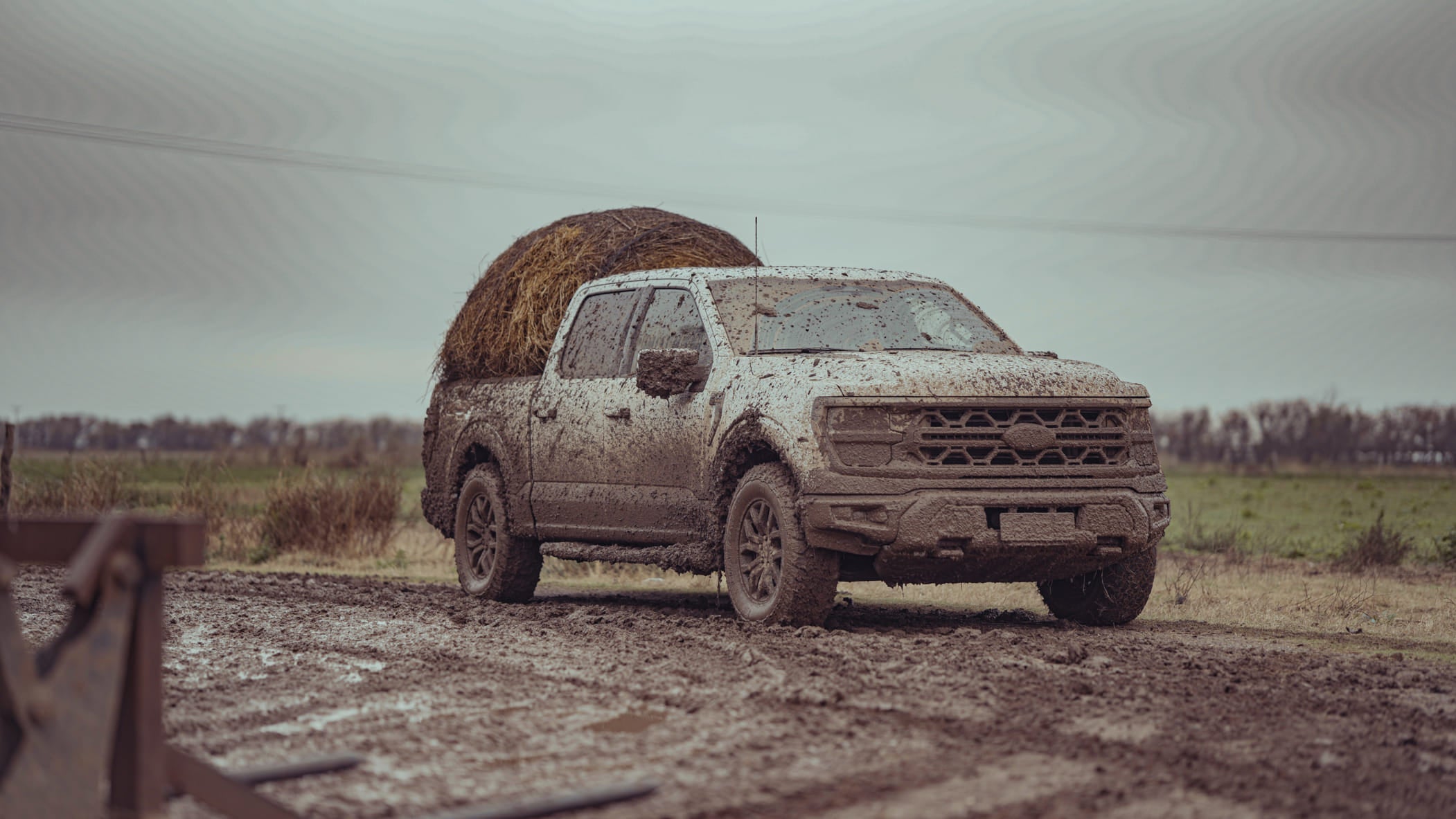The best way to get to know a pickup truck is to take it out of the advertising photo and put it where it's really needed. And that's exactly what we did when Ford Argentina entrusted us with an F-150 Tremor to use, enjoy... and give them real feedback.
From the country road to the dairy farm
We set off on well-maintained rural roads, which were firm but covered with generous puddles from recent rains. There, the Tremor demonstrated character and precision: impressive power, flawless gear shifting, and a differential system that makes it move forward as if it always knows where to go.
But the best part came when we entered a local dairy farm. Within that private setting, the challenge increased: deep muddy trails, terrain trampled by machinery and livestock, and everything else involved in navigating the productive heart of the Argentine countryside.
The best way to get to know a pickup truck is to take it out of the advertising photo and put it where it's really needed. And that's exactly what we did when Ford Argentina entrusted us with an F-150 Tremor to use, enjoy... and give them real feedback.
A postcard that defines the region
The test was conducted in an area where small rural communities coexist with a large number of agricultural establishments. The landscape is proudly repetitive: windmills, Holando Argentino cows, and dairy farms of all sizes, from family businesses to facilities with world-class technology.
It is not uncommon to see milk trucks traveling the roads in search of the raw material that industries use to produce milk, cheese, yogurt, and, of course, that national symbol: dulce de leche.
Our city, Sunchales, is located in the heart of Latin America's most important dairy basin. This region was shaped by the daily work of producers descended from immigrants—mainly from Piedmont—who arrived here more than a century ago from northern Italy and settled here, planting what is now one of the most productive areas in the country.
And it is in this real—not idealized—environment that a pickup truck must prove what it is made of.


700 kg in the box and exemplary performance
One of the key moments of the test was loading a roll of alfalfa weighing approximately 700 kg, which we placed in the box using an old Massey with a front loader, converted into a lift. An everyday maneuver in many fields, but a real technical test for the vehicle.
Why? Because when lifting such a heavy load to a considerable height, the center of gravity of the assembly shifts upward and backward, creating a scenario in which many vehicles lose their balance.
This was not the case with the Tremor. Driving around the private facility, it remained steady, without excessive roll or unpredictable behavior, even when crossing areas of deep mud. The suspension, weight distribution, and electronic management showed a balance rarely seen in real conditions.
And as if that weren't enough, with that same loaded roll, we drove back to the factory, where the truck remained parked for a couple of days. Until the phone rang: the alfalfa had to be returned. It was, no less, the food for a group of calves. Part of the test. Part of the story.
After passing a demanding Pre-Qualifying phase, Byte500 was officially confirmed by the organization and will compete in the Porsche Cup category, where it will share the track with renowned teams such as Williams Esports, Apex Racing Team, Impulse Racing, and Team Fordzilla, among others.




Why does the center of gravity matter?
When loading a vehicle, it's not just how much weight it carries that matters, but where that weight is located.
A roll of alfalfa like the one we use is bulky and dense. When placed on the box, it raises and shifts the vehicle's center of gravity, which changes its behavior:
- Loss of stability when cornering: greater weight transfer, causing increased lateral tilt (roll), which compromises safety during rapid maneuvers.
- Greater inertia when changing direction: the increased mass makes it difficult to respond quickly to the steering wheel.
- Less traction on the front axle: as weight shifts rearward, front-end grip decreases.
- Greater demands on rear suspension, especially on uneven roads.
What is remarkable about the F-150 Tremor is that, even with this technical handicap, it maintained solid performance, without bouncing or erratic movements. That speaks to power, yes. But above all, it speaks to intelligent design, a well-thought-out chassis, and well-calibrated suspension. All of that is not visible in a technical specification sheet... but you notice it when you need it most.



Conclusion: real use, real results
We tested the F-150 Tremor where it really makes sense to test it: on rural roads, in the mud of a dairy farm, with a real load, in real conditions.
We thank Ford Argentina for their trust. This type of experience allows us to get to know the product in depth, but also to show how brands and companies in the productive interior can build value together.
Here, where much of the country's food is produced, the vehicles that make it possible are also tested.
Post on Leonardo Collino's social media, taking a 90-degree turn with the F150 Tremor loaded with a roll of alfalfa. The test was carried out on a road closed in both directions and with all safety measures in place.


